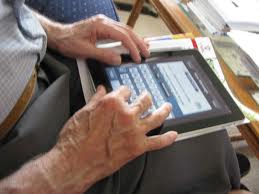 Today is World Usability Day (WUD). WUD celebrates the technologies, products and services that improve our lives by doing what they’re designed to do in a way that engages and assists us. And more importantly, it’s a day for encouraging creators, designers and manufacturers to put usability at the forefront when they’re making products.
Today is World Usability Day (WUD). WUD celebrates the technologies, products and services that improve our lives by doing what they’re designed to do in a way that engages and assists us. And more importantly, it’s a day for encouraging creators, designers and manufacturers to put usability at the forefront when they’re making products.
We’re pretty proud of some of our useable technology – like our smartphone apps. We’re leveraging a technology that’s well on the way from being popular to being ubiquitous, and creating applications and services that can make a big difference to a wide range of people.
Take people who’ve had heart attacks, for instance. Nowadays, a lot more people survive heart attacks than in the past, but post-heart attack rehab remains a problem. It used to involve travelling to an outpatient clinic or similar centre, and there was a considerable dropout rate from the program. This is a problem, because patients who successfully complete cardiac rehab following a heart attack have much better health outcomes.
They are less likely to have another cardiac event, be readmitted to hospital or die from their condition. So we developed a smartphone home care delivery model – known as the Care Assessment Platform. A clinical trial found that people were almost 30 per cent more likely to take part in their rehab program at home using the app than those who had to travel to a clinic.
What’s more, people using the app were 40 per cent more likely to stick to the program and almost 70 per cent more likely to see it through to completion. That’s REAL usability.
Of course, the best treatment for heart attacks is not having one in the first place. As we all know, weight is a factor in heart disease. And certainly, keeping your weight down is a very, very good thing to do after a heart attack. We’re hoping we can help there too.
We’re currently working with Bupa Health Foundation on a trial of smartphone apps to assist with dieters’ mood and motivation. Face-to-face support is often the best way to succeed on a diet, but this is not always possible, and it can get expensive.
 But a weight loss app can give advice at a single swipe, providing regular daily reminders and support.
But a weight loss app can give advice at a single swipe, providing regular daily reminders and support.
So you’ve survived a heart attack and done the rehab using an app. And you’ve lost weight. That means you’ve got more chance of living to be old. We’ve been working on apps to help with that, too.
Our Smarter, Safer Homes project is looking at ways to keep older people living safely in their own homes for longer. This not only takes pressure off the aged care home sector, but also improves older people’s health and wellbeing.
Our app involves placing simple sensors such as motion detectors and energy sensors placed around the home. These monitor the person as they go about their day and report the data back to family members or carers.
For example, motion sensors can detect whether a person got up at the usual time, put the kettle on, regularly cooked food for themselves, and even if they left the oven on.
The data is also reported to a tablet device owned by the elderly person, who retains full control over what data gets reported to others and what stays private.
SoilMapp screen
Not all our work on apps is in human health. There’s one for soil health too. SoilMapp is designed to make soil information more accessible for Australian farmers, consultants, planners, natural resource managers, researchers and people
interested in soil. It provides direct access to the best national soil data and information from several sources.
With SoilMapp, users can find information on soil depth, acidity, salinity, soil carbon, soil water holding capacity and other attributes in a matter of minutes, anywhere there’s a wireless or internet connection.
We’ve also counted koalas using an app, and we’re looking at doing many more things with this technology.
Even the first version of the iPhone had more computing power than all of NASA had for the Apollo 11 mission, so there’s plenty of opportunity to make use of the potential of smartphones. That very usable thing in your pocket just keeps on getting more so.


